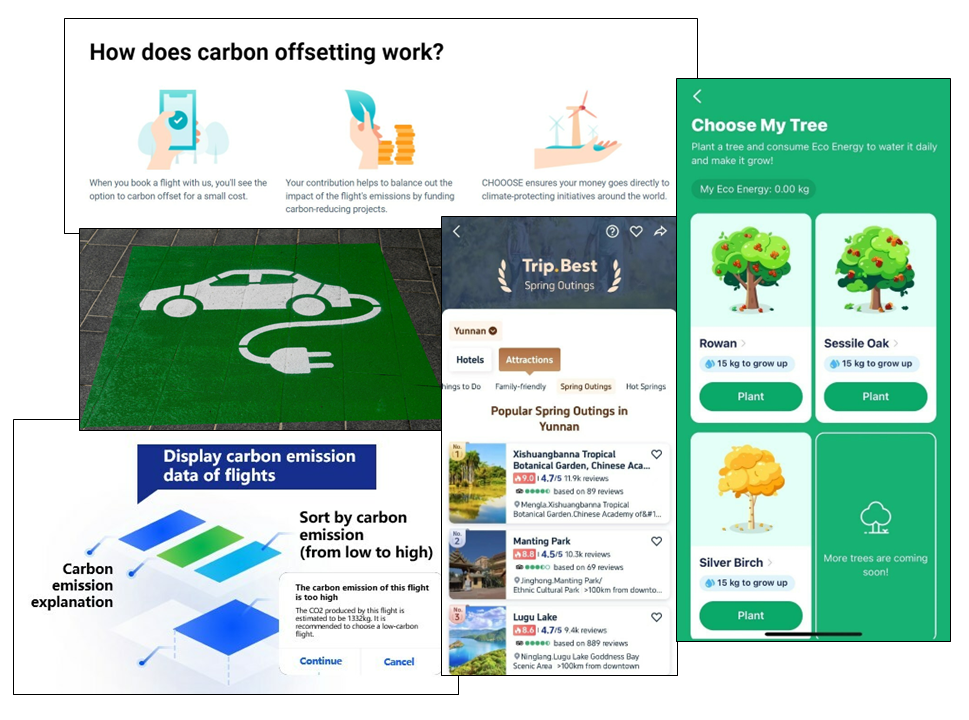In 1911, American newspaper editor Arthur Brisbane gave this advice to advertisers that later became the mantra for storytellers everywhere: "Use a picture. It's worth a thousand words."
Since then, the way the world consumes information has fundamentally shifted. Digital technology – from the internet and social media to podcasts, animation, and video games – has made visual and audio experiences the expectation instead of the exception. Unlike text alone, multimedia like graphics, videos, and photos can evoke strong emotions and draw us in, leaving a lasting impression and inspiring conversations for years to come. There’s just no denying the power of this type of storytelling.
For public relations professionals, multimedia content, in its many forms, is no longer just a nice-to-have - it's an absolute necessity. It may not guarantee you earned media coverage, but it can go a long way in getting the attention you seek from media partners.
Why Multimedia Matters in Public Relations
In PR, multimedia refers to various media forms, such as text, images, videos, audio, and interactive content, and there are millions of great reasons to include it in your media outreach. But don’t just take my word for it - consider these significant findings, sourced directly from journalists for our 2024 State of the Media Report:
- Journalists’ success is primarily measured by readership/views and engagement, so eye-catching, attention-grabbing visuals provided by PR teams are a major plus. Journalists are as focused on getting eyes on the story as you are.
- A quarter of journalists say that PR teams who include multimedia with their pitches/press releases make their job easier, and some early adopters are using AI to create multimedia themselves. You can save them loads of time and energy by providing relevant assets customized to the channels they’re using to publish and promote content.
- 1 in 3 journalists explicitly want multimedia elements from PR teams - and it’s not for nothing: 87% used PR-provided multimedia in the last year. Images are by far the most popular, with data visualizations/infographics and videos following.
- More than half of journalists (55%) are more likely to pursue a pitch if it includes the right multimedia, so providing relevant, compelling audio or visual assets with your story can greatly improve your chances of coverage.
For media professionals juggling multiple deadlines, navigating overflowing inboxes, and trying to work with limited resources, the right multimedia assets are invaluable. PR teams that proactively supply these assets can streamline journalists' workflows and simultaneously position themselves as indispensable partners.
5 Steps for Integrating Multimedia in Your PR Strategy
To leverage multimedia effectively, it must be woven into your PR initiatives from conception through execution, rather than being an afterthought. There are several ways to integrate multimedia into your strategy:
1. Research Your Target Journalists/Outlets
Study your target journalists and outlets to understand their multimedia preferences, what channels they use to publish and promote content, and what multimedia they’ve used in recent coverage.
You’ll want to understand how photos and videos are used in their stories. For example, if they embed videos, do the videos tend to run near the beginning, the end, or in the middle of an online article page? These choices can show whether the outlet sees multimedia as a way to increase the length of visits, provide context similar to a quote from an interview in the story, or a mixture of other purposes.
It’s also important to know what mix of platforms the journalist or outlet uses to publish and promote content. Beyond their own websites, for instance, how much do they publish and promote across social media and YouTube? This will offer insight into the volume, variety, and value of the multimedia content they want.
Pro tip: If you have access to a media database like CisionOne Outreach, you can cut the research process down significantly, as many of the profiles contained in these tools include such info as what types of content that want from PR pros, in what formats, and what types of multimedia they’ve used previously.
2. Map It Out
Early in the planning and development process for each announcement or campaign, look at your narrative to map out how different multimedia elements can bring your key messages to life. You’ll want to look for the way photos, videos, or infographics could offer the most value to media partners, while also being useful in other PR and marketing efforts.
Taking into account your available resources and timing for execution, here are a few things to think through:
- How many press releases will be issued? What multimedia content should be included with each to enhance that specific story angle?
- How many multimedia assets should be unique to a particular part of the campaign, and what might be included and repurposed throughout (like logos, headshots, etc.)?
- What kind of multimedia will “show” rather than “tell” the messages you’re trying to convey? Think of how different visuals may be better in summarizing the main points or simplifying a complex subject.
- What can be created in advance, and what might need to be created quickly during the campaign, after an event for example?
3. Diversify Your Formats
Give journalists a variety of multimedia assets to work with – visuals highlighting different messages, various sizes and shapes, and multiple formats – to see what resonates. They know what works best with their audiences, so it’s a good indicator of the types of assets you’ll want to provide in the future.
Pro tip: Be sure to include multimedia with an embedded link in your email, instead of attaching files. Otherwise, your email will most likely land in SPAM or trash, or worse - 12% of journalists say they will go as far as blocking PR pros who attach files (State of the Media Report).
Stuck on what might make a good visual for your story? You probably have more options than you think. Thanks to mobile editing apps and online design tools, you don't need a massive budget to produce high-quality multimedia content in-house.
Here’s a list to help you brainstorm different formats for your multimedia:
- Screenshots: Easy-to-grab screenshots can include images of products, web portals, customer reviews, or social media posts.
- Cover Pages: For stories related to a white paper or report, the cover is a simple image that can add a ton of value for journalists who cover the story.
- Visualized Quotes: Using an alternate font, a bold color in the background, a headshot, or even background imagery can make a powerful quote graphic.
- Audio: Brief sound bites, interviews with experts, or snippets from an event can complement your story, where appropriate to the journalist and outlet.
- Charts and Graphs: Journalists love data, especially when it’s easy to understand the key message at a glance. Just export the info from a spreadsheet and transform it into a striking, on-brand visual.
- Infographics: From the most basic to more complex, infographics make for interesting visuals and can tell a compelling story with just a glance. One or two statistics, with an icon or symbol next to them and some explanatory text is all you need to give reporters something that makes a great callout in their article.
- Videos: Whether you film a brief snippet with a brand spokesperson discussing your news, pull together images and graphics to overlay with text, or add audio commentary on top of previously shot footage, videos are a great choice to enhance your story – and they’re easy to share on social. (Pro tip: Keep videos under two minutes. That’s the sweet spot for engagement.)
4. Stay True to Your Brand
It probably goes without saying, but your visuals should unmistakably align with your brand’s identity (color palettes, typography, logos, etc.).
As media partners and others share your news, the multimedia assets may end up standing alone. So beyond making sure your branding is present, be sure your messages will resonate even without the story behind it by including clear labeling, a compelling title, and a CTA or link for more information.
And don’t let your multimedia assets turn into a reputational crisis - avoid copyright infringement or legal issues by ensuring you have the proper permissions and rights to use any images, videos, and music.
5. Don’t Forget About SEO
Once you've created multimedia content for your PR campaigns, there’s still more to do to maximize its reach and impact. Be sure to optimize your assets for search engines by using relevant keywords, descriptive titles, and alt text for images. This will help improve visibility and drive organic traffic to your content.
Examples to Inspire Your Next PR Campaign
For inspiration, let's look at a few examples of how leading brands are leveraging multimedia in their press releases:
- This Earth Day press release from Trip.com shares a variety of useful multimedia assets in different shapes and sizes – from infographics and images to product screenshots and photography. Here are a few examples of the multimedia they included:

- The infographic in a recent Allianz Partners release on summer travel highlights a key stat from their annual research, while also showing the historical trend.
- Samuel Adams’s announcement of Boston Lager Remastered gave the media creative, eye-catching short video and image options to choose from.
- McGraw Hill put a focus on one specific outcome of the AI enhancements to their ALEKS program with a simple, but effective infographic.
- For their earnings releases, both Garmin and AT&T created strong infographics highlighting keys stats from their results. AT&T added a bit more context to their figures with headings that tie back to their strategic pillars.
- IBM embedded a short, highly relevant video directly into their press release. Originally posted on their YouTube channel as a longer video, this is a good example of repurposing content to maximize impact.
- For The Sherwin-Williams Company’s earnings release, they included a screenshot of the report’s cover, with a link to view the entire document.
- In Wilson Sporting Goods’ announcement of their partnership with Caitlin Clark, they embedded a 26-second YouTube video and a static image – giving media partners two great multimedia assets to use in their coverage.
The Takeaway
The PR industry is embracing multimedia, and you should too. It's rapidly becoming the driving creative force for how we pitch stories, cultivate narratives, and earn valuable media coverage. By prioritizing compelling multimedia from initial concept to final execution, you can make a powerful impression on even the busiest journalists and influencers.
Find out how CisionOne can support your PR efforts. Explore the platform or make time to speak with one of our experts.








